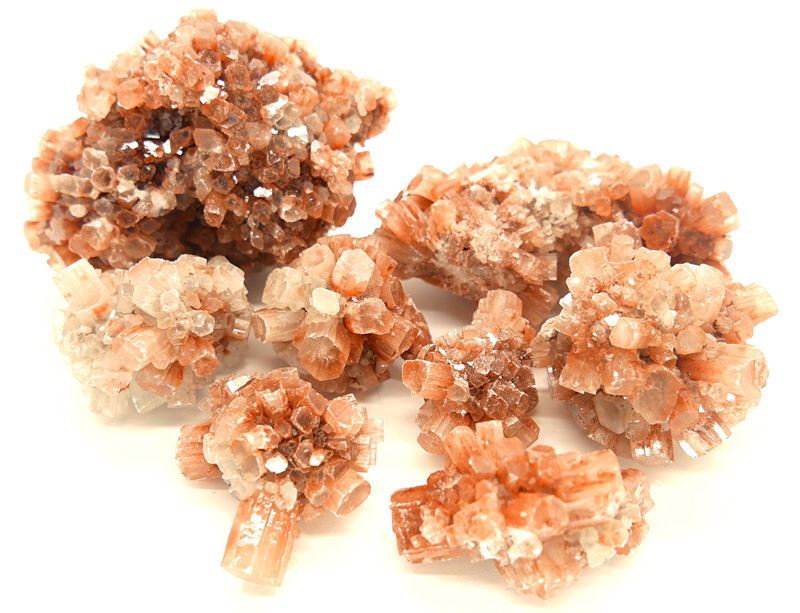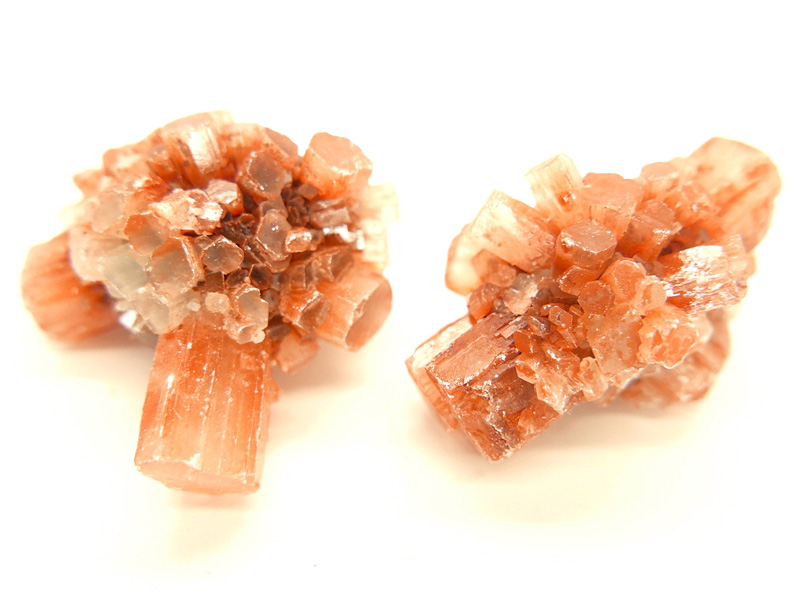

PHYSICAL PROPERTIES
- GROUP Carbonates
- COMPOSITION CaCO3
- COLOR Colourless, white, gray, yellowish, reddish, green
- CRYSTALLINE SYSTEM Rhombic
- CRYSTALLINE HABIT Prismatic, acicular
- HARDNESS 3.5 - 4
- FRACTURE Subconchoidal, brittle
- EXFOLIATION Imperfect
- SHINE From vitreous to resinous
- STRIP White
- TRANSPARENCY From transparent to translucent
- SPECIFIC GRAVITY 2.9
MINERALOGICAL CHARACTERISTICS
The aragonite or aragonite is a calcium carbonate with the same chemical composition as calcite but different in their crystalline structure. Being an unstable and water-soluble mineral, aragonite can turn into calcite over time. Aragonite crystals are rhombic and are usually twinned, although there are also stalactitic, radial and columnar crystals. The aragonite is usually brown, white, colorless, gray, blue, green, violet or yellow. It is found in oxidation zones, in caves, in cracks in volcanic rocks, and in hot spring deposits. It is also commonly found in the shells and carapaces of many marine invertebrates.
The name aragonite is due to the aragonite specimens found in 1788 in Molina de Aragón (Guadalajara), by the mineralogist Abraham Gottlob Werner.
Deposits: Spain, Morocco, Namibia, Great Britain, England, France, Germany, Italy, Hungary, Czech Republic, Mexico, Austria and Greece.
THERAPEUTIC PROPERTIES
The aragonite is considered a healing and stabilizing stone. It favors the connection with mother earth and symbolizes conservation and vitality. Helps focus and ground energy for calmer, more pragmatic and balanced functioning. The aragonite represents tolerance with oneself and with the environment, providing a state of inner tranquility.


